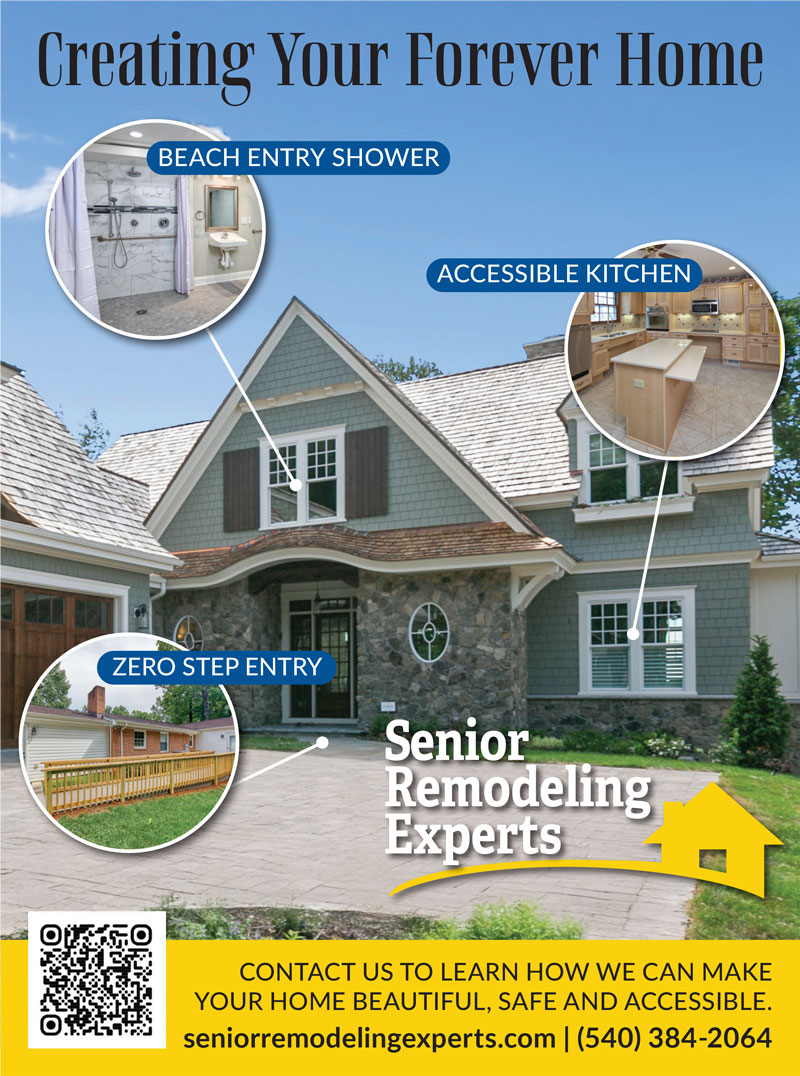Gardening | Without a Plot
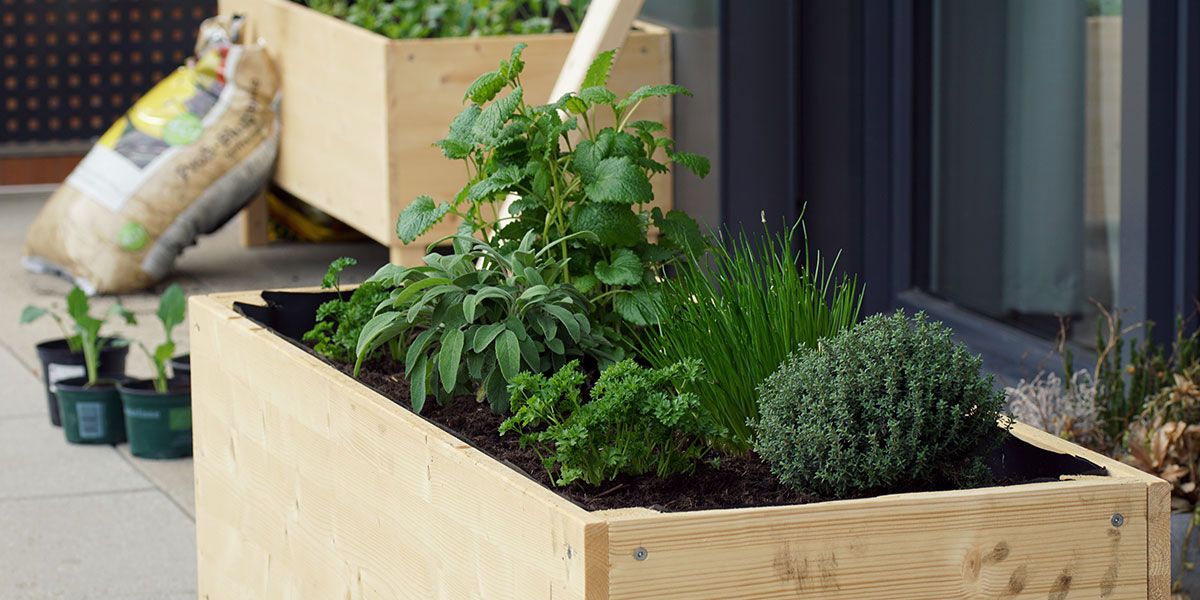
Not every gardener has a yard perfectly suited for a vegetable garden—or even a yard for that matter. Whether you’d like to take on another hobby, grow your own food, or simply have a fresh taste of summer within steps of your kitchen, there are several solutions for growing vegetables and herbs regardless of space. Among the solutions are container gardens, raised bed gardens, and keyhole gardens.
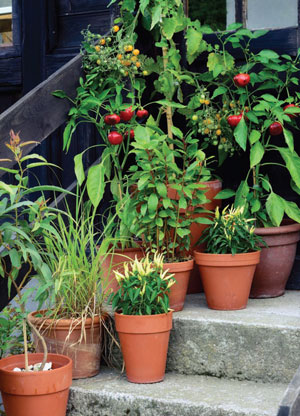 Container gardens are perhaps the easiest solution to the quandary of where to put the garden. They are, quite simply, gardens grown in containers. If it can hold soil, it can be a planter, so in addition to plastic or terra cotta pots, think about utilizing old barrels, buckets and tubs to create interesting containers for plants. You’ll want to ensure that what you use is food safe and won’t off-gas anything you don’t want to eat. Container gardens are perfect for engaging kids in gardening, as they are easy to access. They are great for decks or patios, but can also be worked into an existing vegetable garden to add interest and versatility.
Container gardens are perhaps the easiest solution to the quandary of where to put the garden. They are, quite simply, gardens grown in containers. If it can hold soil, it can be a planter, so in addition to plastic or terra cotta pots, think about utilizing old barrels, buckets and tubs to create interesting containers for plants. You’ll want to ensure that what you use is food safe and won’t off-gas anything you don’t want to eat. Container gardens are perfect for engaging kids in gardening, as they are easy to access. They are great for decks or patios, but can also be worked into an existing vegetable garden to add interest and versatility.
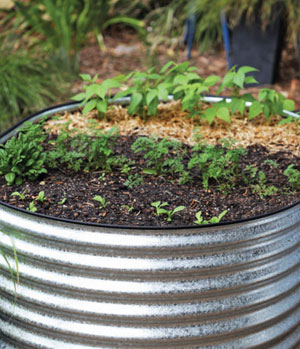 Almost anything you can grow in a traditional garden can be grown in a container garden, with the exception of corn and large melons or squash. Some consideration must be given to the size of the pot you are using as well as proper drainage to avoid waterlogged roots. Herbs, carrots and radishes prefer a shallower pot, while tomatoes will need at least a 5-gallon container. Climbing vegetables like cucumbers are an excellent candidate for a container garden, but they will require space and structure for vining. It is important to note that when trellising a plant, be sure to have the appropriate size, and to properly secure it for stability.
Almost anything you can grow in a traditional garden can be grown in a container garden, with the exception of corn and large melons or squash. Some consideration must be given to the size of the pot you are using as well as proper drainage to avoid waterlogged roots. Herbs, carrots and radishes prefer a shallower pot, while tomatoes will need at least a 5-gallon container. Climbing vegetables like cucumbers are an excellent candidate for a container garden, but they will require space and structure for vining. It is important to note that when trellising a plant, be sure to have the appropriate size, and to properly secure it for stability.
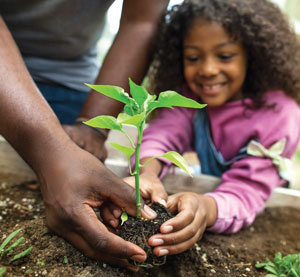 Raised beds are another convenient method of gardening that gives gardeners more control over the soil. They can be whatever size you wish them to be, constructed out of a variety of materials (wood, metal, even fabric!), portable, or more permanently affixed to your yard. You can build a raised bed yourself, create one from a kit or purchase one already assembled. There are tiered raised beds, ones that come with legs for height, or ones that sit low to the ground. The type of raised bed you choose will determine what, if anything, you need to do to the ground below it. You may need to level the ground, remove turf or other vegetation, or, if putting your raised beds on a hardscape, ensure there is proper drainage.
Raised beds are another convenient method of gardening that gives gardeners more control over the soil. They can be whatever size you wish them to be, constructed out of a variety of materials (wood, metal, even fabric!), portable, or more permanently affixed to your yard. You can build a raised bed yourself, create one from a kit or purchase one already assembled. There are tiered raised beds, ones that come with legs for height, or ones that sit low to the ground. The type of raised bed you choose will determine what, if anything, you need to do to the ground below it. You may need to level the ground, remove turf or other vegetation, or, if putting your raised beds on a hardscape, ensure there is proper drainage.
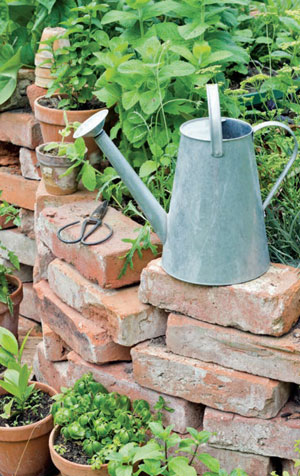 Keyhole gardens are essentially raised bed gardens but with compost bins built in, conserving space but also allowing the soil to be amended with little effort on the part of the gardener. Originally developed for areas where space was at a premium, they began circular in shape, but have evolved to be any shape one desires. A cutout leads to the center of the bed, allowing access to the entire bed. Centered in the cutout is a cage, which is a compost bin to be filled with biodegradable waste (think leaves, grass clippings, coffee grinds and vegetable scraps). The cage can be added to daily and may need to be turned every 4-6 weeks, although watering the garden via the top of the compost bin helps it break down as well. In watering the garden through the bin, water flows out through the bed, carrying the nutrients from the compost with it, for a perpetual fertilizing method. Because of their design, keyhole gardens can be planted a bit denser than other gardens, but you’ll need to rotate plants annually as you would with any other garden plot to help maintain a healthy soil balance.
Keyhole gardens are essentially raised bed gardens but with compost bins built in, conserving space but also allowing the soil to be amended with little effort on the part of the gardener. Originally developed for areas where space was at a premium, they began circular in shape, but have evolved to be any shape one desires. A cutout leads to the center of the bed, allowing access to the entire bed. Centered in the cutout is a cage, which is a compost bin to be filled with biodegradable waste (think leaves, grass clippings, coffee grinds and vegetable scraps). The cage can be added to daily and may need to be turned every 4-6 weeks, although watering the garden via the top of the compost bin helps it break down as well. In watering the garden through the bin, water flows out through the bed, carrying the nutrients from the compost with it, for a perpetual fertilizing method. Because of their design, keyhole gardens can be planted a bit denser than other gardens, but you’ll need to rotate plants annually as you would with any other garden plot to help maintain a healthy soil balance.
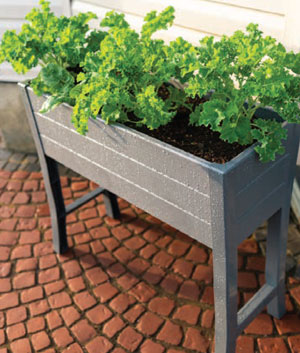 Both raised beds and keyhole gardens can be made from a wide variety of materials—brick, stone, wood, metal. Wood can be expensive and it is best to use untreated wood to avoid chemicals seeping into your soil. Among the best untreated woods to use for building a garden are black walnut, cypress, cedar, redwood, oak, black locust, osage orange or untreated pine. Some of these woods can be hard to find or price prohibitive. Not all of them are sustainable, coming from old-growth forests, and while they will all last for some time, any wood you use will have to be replaced at some point. If you choose to extend the life of your untreated wood with any sort of paint or stain, keep it natural with something like raw linseed or tung oil. You’ll want the wood to be able to breathe.
Both raised beds and keyhole gardens can be made from a wide variety of materials—brick, stone, wood, metal. Wood can be expensive and it is best to use untreated wood to avoid chemicals seeping into your soil. Among the best untreated woods to use for building a garden are black walnut, cypress, cedar, redwood, oak, black locust, osage orange or untreated pine. Some of these woods can be hard to find or price prohibitive. Not all of them are sustainable, coming from old-growth forests, and while they will all last for some time, any wood you use will have to be replaced at some point. If you choose to extend the life of your untreated wood with any sort of paint or stain, keep it natural with something like raw linseed or tung oil. You’ll want the wood to be able to breathe.
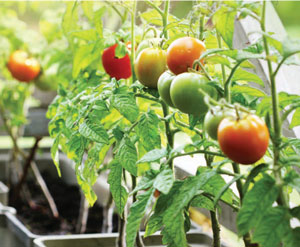 No matter what type of container garden you’re planting, it is important to fill it with a good soil mix. It will need to contain nutrients your garden needs, retain moisture, and drain well. You can use potting mix or create your own mix using top soil and compost. A 50-50 blend of top soil and compost is a good starting point for any gardening bed. Because these smaller gardens tend to dry out faster than a more traditional garden plot, a light layer of mulch can help prevent evaporation of moisture; straw or ground-up leaves are excellent organic groundcover. Clustering your plants by planting them close together creates a microclimate that can also help with evaporation.
No matter what type of container garden you’re planting, it is important to fill it with a good soil mix. It will need to contain nutrients your garden needs, retain moisture, and drain well. You can use potting mix or create your own mix using top soil and compost. A 50-50 blend of top soil and compost is a good starting point for any gardening bed. Because these smaller gardens tend to dry out faster than a more traditional garden plot, a light layer of mulch can help prevent evaporation of moisture; straw or ground-up leaves are excellent organic groundcover. Clustering your plants by planting them close together creates a microclimate that can also help with evaporation.
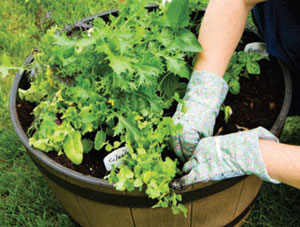 There are many ways to approach vegetable gardening beyond the plot-in-theground method. Container gardens, raised beds and keyhole gardens all offer more manageable tactics, allowing you to dip your fingers into the dirt without too much commitment. It’s an easy way to try your hand at vegetable gardening or, for the seasoned gardener, an easy way to try something new. ✦
There are many ways to approach vegetable gardening beyond the plot-in-theground method. Container gardens, raised beds and keyhole gardens all offer more manageable tactics, allowing you to dip your fingers into the dirt without too much commitment. It’s an easy way to try your hand at vegetable gardening or, for the seasoned gardener, an easy way to try something new. ✦
black locust, black walnut, brick, cedar, compost, compost bins, container gardens, cypress, fabric, keyhole gardens, metal, oak, osage orange or untreated pine, raised bed gardens, Redwood, stone, tiered raised beds, top soil, Wood
